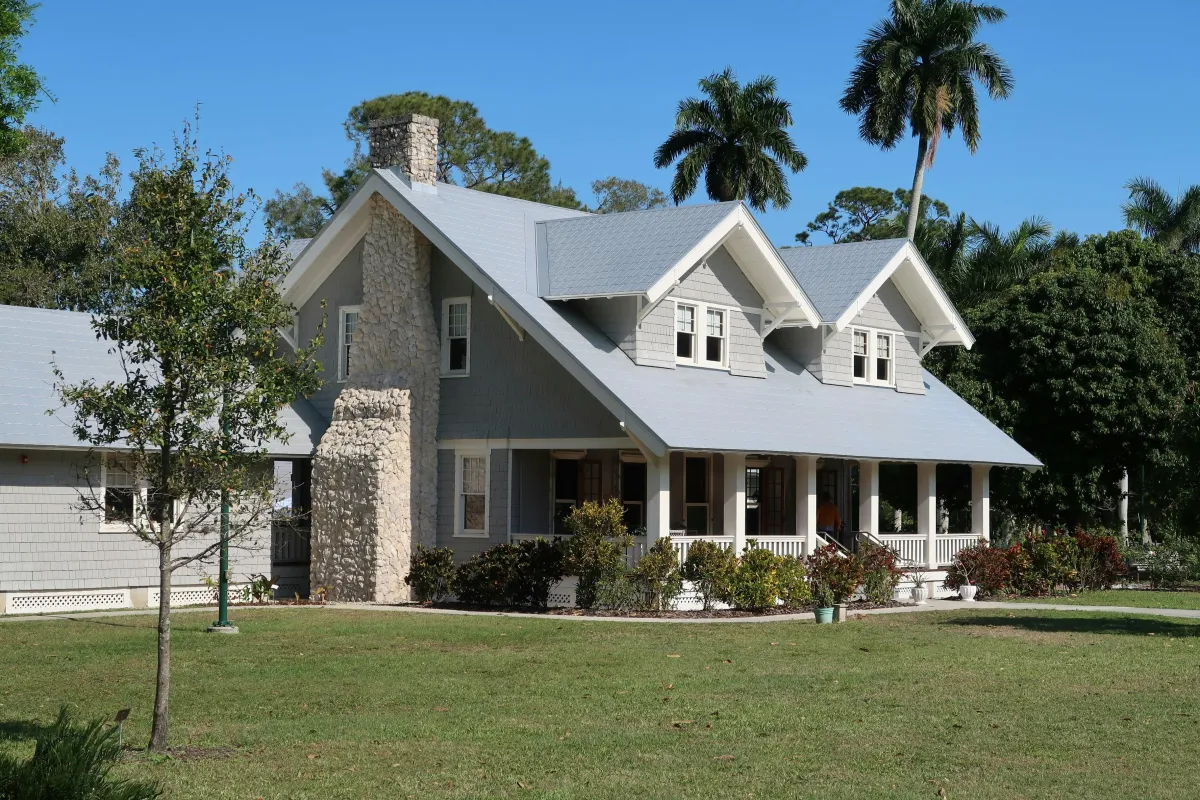
Key Insights on Custom House Plans and Building Decisions
Designing a home is more than picking floor tiles and paint swatches—it’s about creating a space that fits your life, land, and long-term goals. While standard home plans may offer convenience, they often lack the flexibility needed to reflect personal preferences, site-specific conditions, or local building codes. Custom house plans, on the other hand, are crafted with purpose and precision. From the first sketch to final blueprints, they bring together your vision and the architect’s expertise to shape a home that’s not just livable, but truly yours. Whether you’re considering a renovation or a brand-new build, custom planning ensures every square foot counts.
The Value of Custom House Plans: Personalized Design from Start to Finish

Custom house plans offer more than aesthetic flexibility—they’re tailored to your lot, lifestyle, and local building codes. Unlike standard templates, they evolve through collaboration with architects who refine every detail—from room layout to roof style—ensuring optimal functionality, energy efficiency, and regulatory compliance. This personalized process not only enhances your home’s uniqueness but also streamlines construction and budget planning.
How Do Custom House Plans Differ From Standard Plans?
Standard plans are pre-designed templates with limited modifications that may not reflect local building codes or unique site conditions. Custom plans adapt to site orientation, foundation type, drainage, and specific homeowner requirements—whether a saltbox house façade, Cape Cod gabled roof, pantry layout, or basement floor plan—for an ideal fit.
What Is the Custom House Plan Design Process?
The process begins with a concept meeting to discuss lot size, desired square footage, budget, and style. After site analysis and code review, architects produce preliminary floor plans and elevations. Following feedback, details such as deck location, dining room flow, and screened porch design are refined before finalizing construction drawings and permit sets. This iterative process ensures accurate cost estimates and compliance with building codes.
How Do Architects Influence Custom House Plans?
Architects transform homeowner needs into efficient spatial arrangements, optimize natural light, select low-energy materials, and incorporate building code requirements. Their expertise in zoning, fee schedules, and construction methods helps minimize change orders and supports realistic budget and timeline estimates.
What Are the Key Differences Between Renovation and New Build Projects?

Renovation and new build projects differ in scope, cost structure, timeline, and design freedom. Renovations update existing structures and finishes, while new builds start on raw land and require full foundation work, framing, roofing, and utility connections.
What Defines a Renovation in Custom House Planning?
A renovation reconfigures or updates existing spaces—such as a basement finish, kitchen remodel with pantry expansion, floor refinishing, deck replacement, or screened porch addition—while keeping the structural shell intact. It involves matching new materials with older ones and addressing hidden conditions under retrofit codes.
What Does a New Build Entail in Custom Home Design?
A new build begins with complete site preparation, grading, and foundation installation (whether slab, crawl space, or basement). It includes full framing, roofing, mechanical systems, and interior fit-out. Custom floor plans integrate features like fireplace placement, deck design, and built-in pantries under a single permit, allowing for modern efficiency from day one.
What Are the Pros and Cons of Renovation vs New Build?
Project Type Primary Benefit Main Limitation Renovation Lower material cost and reuse of existing structure Hidden repair costs; limited redesign scope New Build Full design freedom with modern efficiency Higher initial expense; longer timeline
Renovations reuse existing foundations and framing, reducing waste but may uncover unexpected repairs. New builds offer complete customization but require more upfront work and permit fees.
How Do Renovation Costs Compare to New Build Costs?
Both renovation and new build costs depend on project scale, material quality, labor rates, permit fees, and site conditions. Renovations include contingencies for unforeseen repairs, while new builds cover all soft and hard costs.
Renovation vs. New Build Cost Analysis Renovation costs can be affected by issues like hidden structural damage or outdated systems, leading to budget overruns. New builds, though having higher initial costs, offer better control over expenses with energy-efficient technologies.
What Factors Influence Renovation Costs?
Costs depend on the scope (e.g., kitchen versus full-house), material matching (hardwood floor vs. carpet), necessary structural work (foundation repair or load-bearing wall removal), and adherence to building codes. Hidden issues may require a 10–20% contingency budget.
What Drives New Build Costs?
New build costs include land preparation, foundation work, framing, roofing, exterior finishes (siding, porch railings), and utility connections, plus interior fit-out (flooring, cabinetry, fireplace) and landscaping. Custom features like saltbox roof lines, deluxe pantries, or expansive decks add to the expense along with architect and permit fees.
How Can Homeowners Budget for Renovation or New Build Projects?
Homeowners should obtain detailed estimates from architects and contractors, plan for a 15% contingency on renovations and 10% on new builds, and compare costs line-by-line (foundation, framing, finishes, mechanicals, and permits). Choosing standard finishes or efficient envelope systems can further help control expenses.
What Are Typical Timelines for Renovation vs New Build Projects?
Project durations vary with complexity, permit lead times, and weather conditions. Renovations may be scheduled around occupancy, while new builds are often tied to seasonal site work and subcontractor availability.
How Long Does a Renovation Usually Take?
A partial renovation (e.g., bathroom, kitchen, or screened porch addition) typically spans 8–16 weeks, covering design, permits, demolition, and finishes. Whole-house remodels may take 4–6 months.
What Is the Timeline for a New Build?
A custom new build usually takes 9–12 months from design start to move-in. This period includes 2–3 months for design and permits, 1 month for site prep and foundation work, 3–4 months for framing and enclosure, and another 3–4 months for interiors and landscaping. Weather can affect framing and exterior finishes.
How Do Timelines Affect Project Planning and Decision Making?
Longer timelines can increase financing and temporary housing costs. Renovations might allow for partial occupancy to reduce moving expenses, whereas new builds often require phased financing.
How Does Sustainability Factor Into Renovation and New Build Custom House Plans?

Both renovation and new build projects can incorporate green building principles to reduce operational costs, increase resilience, and promote healthier living environments. Sustainable design focuses on reducing environmental impact and improving energy efficiency. Renovations can upgrade insulation and windows, while new builds can use passive solar design and renewable energy systems.
What Sustainable Design Practices Are Common in Renovations?
Renovations often reuse existing structural elements to reduce waste. Upgrades can include high-efficiency windows, improved insulation, HVAC systems, and low-VOC paints, along with repurposed flooring or reclaimed wood finishes.
How Are New Builds Designed for Sustainability?
New builds can integrate passive solar orientation, high-performance envelope assemblies, robust mechanical systems, solar roof panels, and rainwater harvesting systems. Custom floor plans may optimize daylighting and natural ventilation to reduce cooling loads.
What Are the Long-Term Benefits of Sustainable Custom Homes?
Sustainable homes usually result in lower utility bills, improved indoor air quality, higher resale values, and reduced environmental impacts. Efficient materials and systems also minimize maintenance and enhance resilience.
How Can Homeowners Choose Between Renovation and New Build Options?

Deciding between renovating and building new depends on factors like lot constraints, design flexibility, budget, timeline, and sustainability goals.
What Questions Should Homeowners Ask When Deciding?
Does the existing structure meet safety and code standards?
Is the lot size and orientation suitable for expansion or new construction?
What is the long-term value and resale potential of each option?
How do financing and timeline needs fit personal situations?
What sustainability goals are most important?
These questions help determine whether to retain existing foundations and layouts or start from scratch.
How Does Design Flexibility Differ Between Renovation and New Build?
Renovation options are limited by the existing structure, while new builds allow full customization of foundation, floor plan, roof form, and exterior features such as decks, patios, and porches.
When Is Renovation the Better Choice?
Renovation is ideal when the existing structure has sound bones, when lot constraints prevent expansion, or when preserving historical character is important. It often costs less and reduces construction waste.
When Is a New Build More Advantageous?
New builds offer complete design control, modern performance, and integration of up-to-date building codes and energy-efficient systems. They suit homeowners seeking full customization—from fireplaces to custom pantries—and advanced sustainability.
How Do You Find and Work With the Right Architect for Custom House Plans?

Choosing an architect experienced with either renovations or new builds is key to project success through effective design and clear communication.
What Should You Look for in an Architect?
A robust portfolio of similar projects (such as saltbox additions or modern builds)
Proper licensing and insurance credentials
Familiarity with local building codes and permit processes
A clear fee structure (flat, percentage, or hourly)
A collaborative communication style
How Does the Architect Support Renovation vs New Build Projects?
For renovations, architects assess existing conditions and integrate new systems with minimal disruption. For new builds, they lead site analysis, sustainable design integration, and the permitting process. In both cases, they assist with material selection—covering elements like floors, decks, porches, and fireplaces—and coordinate with consultants.
What Are Typical Architect Fees and How Are They Structured?
Fees vary by project scope and may include:
Hourly rates for consulting or design reviews.
Flat fees for schematic design, design development, and construction documents.
Percentage fees (6–12% of the construction cost) for full-service projects.
Transparent fee agreements help homeowners budget for design alongside foundation, framing, and finish expenses.
How Can Homeowners Collaborate Effectively With Architects?
Effective collaboration requires clear goals and consistent communication. Sharing design inspiration—photos of screened porches, deck details, or pantry ideas—and setting decision deadlines help avoid delays. Regular reviews and site visits ensure the project stays on budget and on schedule.
Custom house plans, whether for renovation or new build, provide a clear roadmap to a tailor-made home that meets aesthetic, functional, and sustainable needs. By understanding costs, timelines, and the architect’s role, homeowners can confidently choose the best approach and bring their dream home to life.
Final Thoughts
Designing a custom home is a journey rooted in personalization, planning, and purpose. Whether you choose to renovate or build from the ground up, custom house plans allow you to shape every detail around your lifestyle, site, and future goals. With the right architect and a clear understanding of timelines, budgets, and sustainability options, you can transform your vision into a space that feels uniquely yours—built to last, function beautifully, and grow with you for years to come.
FAQs About Custom-Built Homes
1. What is a custom house plan?
A custom house plan is a home design tailored to your lifestyle, lot specifications, and local building codes. It’s created from scratch—or heavily modified from a base design—with direct input from the homeowner and architect.
2. How is a custom home different from using a standard plan?
Standard plans are pre-designed and may not consider your lot's orientation, soil conditions, or local regulations. Custom plans are uniquely crafted to maximize space, light, energy efficiency, and personal design preferences.
3. How long does it take to design and build a custom home?
The design phase typically takes 2–3 months, while construction can last 9–12 months. Timelines vary based on complexity, permits, weather, and material availability.
4. Can I customize everything in a new build?
Yes. From floor plans and roof styles to pantry layouts and fireplace placement, nearly every feature can be tailored to your preferences during the planning stage.
5. What’s the difference between renovating and building new?
Renovations update an existing structure, often working around current layouts and materials. New builds start from the ground up, allowing full customization but with higher upfront costs and longer timelines.
6. Is it more expensive to build a custom home or renovate an existing one?
Custom homes generally cost more upfront due to site prep, new materials, and full-system installations. Renovations may be cheaper initially but can incur hidden costs from structural repairs or code updates.
7. How can I budget for a custom build or renovation?
Work with an architect and contractor to create a line-by-line estimate. Include a 10–15% contingency fund for unexpected expenses, especially for renovations.
8. How does sustainability factor into custom home design?
Both renovations and new builds can incorporate green practices, like passive solar design, energy-efficient HVAC systems, and low-VOC materials, to reduce long-term costs and environmental impact.
9. What should I look for in an architect for a custom home?
Choose someone with relevant experience, proper licensing, knowledge of local codes, a clear fee structure, and a collaborative communication style.


